Adaptation in climate finance and development projects: An overview
11 July 2023, Category: All insights, News, Tags: adaptation, climate change, climate finance, deep dive, project design, sustainable development
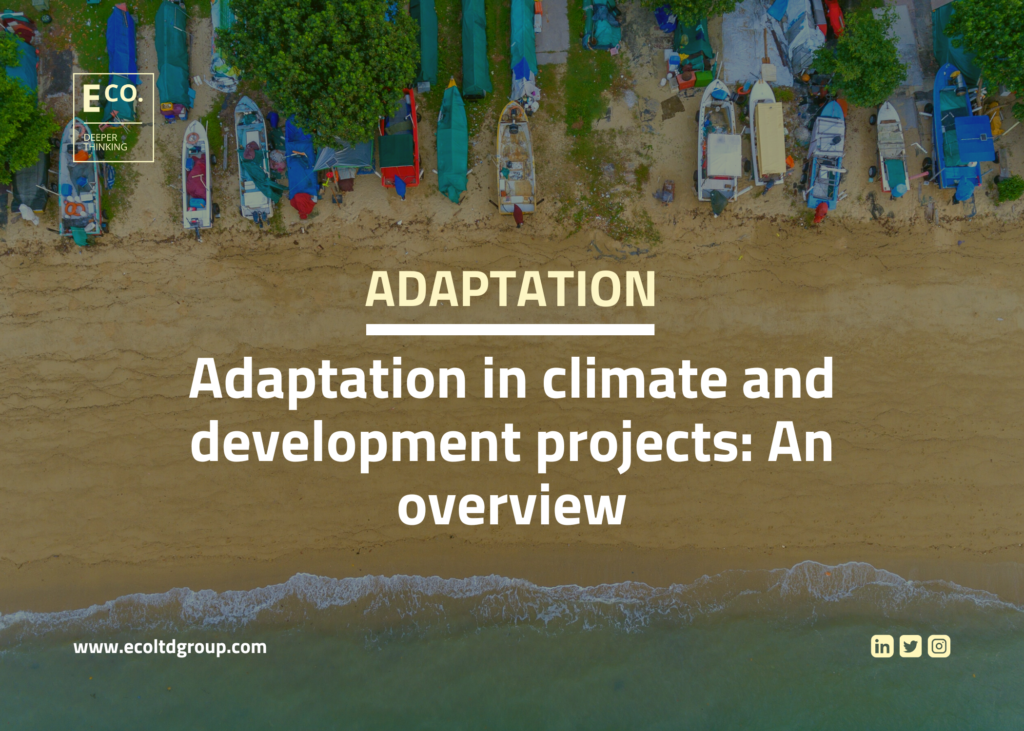
Adaptation in climate finance and development projects is an ever-increasing focus for project developers. Within the project list of the Green Climate Fund, for example, of the total GCF-committed funding (USD 12 billion) currently allocated to projects, 60% goes to mitigation and 40% to adaptation (USD 7.2 billion versus USD 4.8 billion) – as of the year 2023.
For example, Vanuatu is an Small Island Developing State (SIDS) that comprises 83 islands in the Western Pacific. It is extremely vulnerable to climate change risks, most notably risks related to intense tropical cyclones and sea temperature increases. GCF Project FP191, Enhancing Adaptation and Community Resilience by Improving Water Security in Vanuatu, is an E Co-developed project that targets increasing challenges to the water resource and sanitation management services due to these risks.
FP191 and its adaptation measures showcases how adaptation can be utilised across the globe within climate finance and development projects. However, the current state of adaptation does not match the estimated needs of vulnerable populations yet, and the designers of such projects are not infallible. As adaptation targets the current and direct risks and impacts being felt predominantly by poor communities around the globe, it is imperative that the climate finance and development sector address these issues.
Within our 2023 adaptation quarter, we focused on analysing these challenges and providing solid materials that development practitioners (and interested parties) can use to either begin to focus on adaptation projects, or better account for challenges to adaptation within project design or implementation. We’ve collated all of this material here, where you can easily access it.
Explore our useful adaptation in climate finance materials below.
- Article: The adaptation finance gap: Why is it lagging behind?
- Article: Adaptation and finance for cities: Lessons from the Cities Climate Action Summit
- Article: What is current state of Loss and Damage?
- Article: Loss and damage in agriculture: Where to next?
- Article: What should you consider in Locally-Led Adaptation projects?
- E Co. institute training: Linking local adaptation to national, sectoral, and project levels
- Article: The importance of adaptation in cities and urban centres
- Article: The importance of Indigenous Peoples for adaptation measures
- Article: Adaptation in practice: Mangroves and the importance of blue forests
- GCF insight #23: Climate change adaptation in Green Climate Fund project development
- Article: Applying climate finance to blue economy strategies
The adaptation finance gap: Why is it lagging behind?
Let’s talk about the adaptation finance gap. In the world of climate change, attention seems to focus more on stopping future impacts. We regularly see climate models for 2050 or 2100 highlighting the enormous risks we face if we do not reduce emissions in line with the goals of the Paris Agreement.
It is no surprise that the majority of resources, especially financial, currently aim to tackle mitigation. But we’re experiencing the devastating impacts of climate change now. From floods in Pakistan that affected over 33 million people and caused damages in excess of US $30 billion to record breaking wildfires throughout Europe and the worst drought in China in six decades, climate-related events regularly wreak untold havoc. So what is causing the adaptation finance gap?
Adaptation and finance for cities: Lessons from the Cities Climate Action Summit
Securing fit-for-purpose adaptation in cities is vital for ensuring climate resilience. So too is finding adequate finance to back adaptation projects, sourced from both public and private sources. We attended the Cities Climate Action Summit (CCAS23) to learn more about how this can be done.
Held over three days, both online and in-person, by Smart Cities World, CCAS23 was held to help attendees understand actions in three key areas for securing climate resilience in cities; Policy development, climate financing, and technology deployment.
What is the current state of Loss and Damage?
‘Loss and Damage’ has been the hot topic at the forefront of climate change discussions in recent years. While the term lacks an official, formal definition, it typically refers to the “destructive impacts of climate change that cannot be, or have not been, avoided by mitigation or adaptation.” It is also used as a general term to describe the UN climate negotiations, especially the policies and plans discussed, to address climate impacts.
Calls for Loss and Damage financial support for climate-vulnerable nations were met with the agreed establishment of a Loss and Damage Fund at COP27 in 2022. However, the Fund and the rules governing it are yet to be created, so the adequacy of such a financial mechanism remains a contentious issue.
Loss and Damage in agriculture: Where to next?
Climate change is already having substantial negative effects on ecosystems, infrastructure, and people’s health and livelihoods around the world. Given its crucial reliance on weather, climate and natural resources for production, the agriculture sector is particularly vulnerable to natural hazards, disasters, and extreme events.
At the same time, agriculture tends to be one of the main economic activities in developing countries, contributing on average between 10 and 20 percent of national Gross Domestic Product (GDP) in lower-middle-income countries and over 30 percent in low-income countries.
What this means for future Loss and Damage developments is important. Any type of L&D Fund, such as the one announced at COP27, needs to account for the impacts on agriculture around the world.
What should you consider in Locally-Led Adaptation projects?
Locally-Led Adaptation (LLA) is an effort to go beyond the mainstream top-down approach to decision making, and embed local stakeholders at the lowest administrative structure in the decision-making process and implementation of the interventions that will affect them. These stakeholders may include local communities, community-based organisations, citizen groups, local governments, and local private sector entities.
Here’s what is needed for LLA to be properly utilised.
E Co. institute training: Linking local adaptation to national, sectoral, and project levels
On Tuesday 20 June, our adaptation experts held a bespoke training session titled ‘Linking local adaptation to national, sectoral, and project levels’. Through real-life project examples, consultants William Lynam, Dr Irina Hauler, and Marcus Arcanjo brought out the key knowledge and best practices needed to enact fit-for-purpose adaptation projects within the climate finance sector.
Also joining them was our founder, Dr Grant Ballard-Tremeer who provided his thoughts on the individual questions posed by our insightful audience.
If you missed this training and feel like it would benefit you, you can access it for free today simply by clicking this link:
The importance of adaptation in cities and urban centres
It’s a well-known statistic: Over half of the world’s population lives in cities and urban centres. This state of affairs was quick to become the norm, as in 1960, the proportion of urban dwellers only represented 34% of the world’s population. Moreover, the distribution of the world’s urban population is changing. In 1960, 48% of the world’s urban population lived in Europe and North America. By 2020, less than a fifth of the urban population lives in these regions.
Now, because of the distinct place of cities as the main areas of human population (and, consequently, consumption and climate impact), they become a hotbed of issues if not properly acclimatised to the effects of present and future climate change.
In this article, we consider the place of cities as drivers of change, and what needs to be done to achieve this.
The importance of Indigenous Peoples for adaptation measures
For countless years, indigenous peoples have been implementing both effective and affordable strategies that address climate and environmental issues, such as deforestation and biodiversity loss. Going forward, those in the development sector and beyond need to recognise the multifaceted role of indigenous knowledge when it comes to fighting against climate change and stewarding our natural environment.
Adaptation in practice: Mangroves and the importance of blue forests
Blue forests are incredibly important ecosystems, and if there is one type of blue forest ecosystem that needs increased support and protection, it is mangrove forests. Mangroves, a species of salt-tolerant trees and shrubs that thrive in intertidal zones, cover 147,000km2 of land globally – an area equivalent to the size of Bangladesh. These areas are some of the most vulnerable ecosystems on the planet, suffering from a myriad of issues, from human-led deforestation to coastal erosion.
In terms of their value as either a mitigation or adaptation measure, they are a proverbial jack-of-all-trades. Not only do they sequester carbon, they also aid in the protection of coastal areas, working to lessen the impacts of erosion and storms. Another benefit is their importance as biodiversity hotspots.
Mangroves also represent a brilliant opportunity for developing blue economy-focused areas, where resources can be used to aid the economic growth and improved livelihoods of local communities. So how can this be achieved?
GCF insight #23: Climate change adaptation in Green Climate Fund project development
We’ve just released the 23rd edition of our GCF insight series. In this latest edition, we explore what avenues the Green Climate Fund (GCF) can pursue in order to increase the amount of funding for adaptation projects
The basis of this report comes from the results gained from our 23rd GCF insight survey, conducted in June 2023 – consisting of survey questions and semi-structured interviews with climate and development professionals – with responses from project developers, National Designated Authorities, Accredited Entities, consultants, CSOs, and those working on GCF project and programme development.
Applying climate finance to blue economy strategies
Today, our oceans face a wide variety of man-made threats, such as biodiversity loss, ocean acidification, ocean warming, and pollution. Private and public sector actors are, therefore, being increasingly called to set targets for reaching successful environmental legislation across ocean and marine management, and create a level economic and legislative playing field that will benefit every nation that participates in it.
At its core, the concept promotes the protection and improvement of marine-based livelihoods and the economic development of said livelihoods while simultaneously ensuring environmental protections. It is an acknowledgement of the complex and at times fragile state of oceanic systems and works to decouple environmental degradation from economic development.
Discover more about climate finance and development projects in our monthly newsletter
Looking to further a climate finance project? Contact us today
Get in touch with our climate finance consultants to discuss what you’re working on and create successful, fit-for-purpose projects, now and in the future. Email us at: amy@ecoltdgroup.com or find us at the following:
Twitter: @ecoltdnews
LinkedIn: E Co.
Instagram: @ecoltdnews
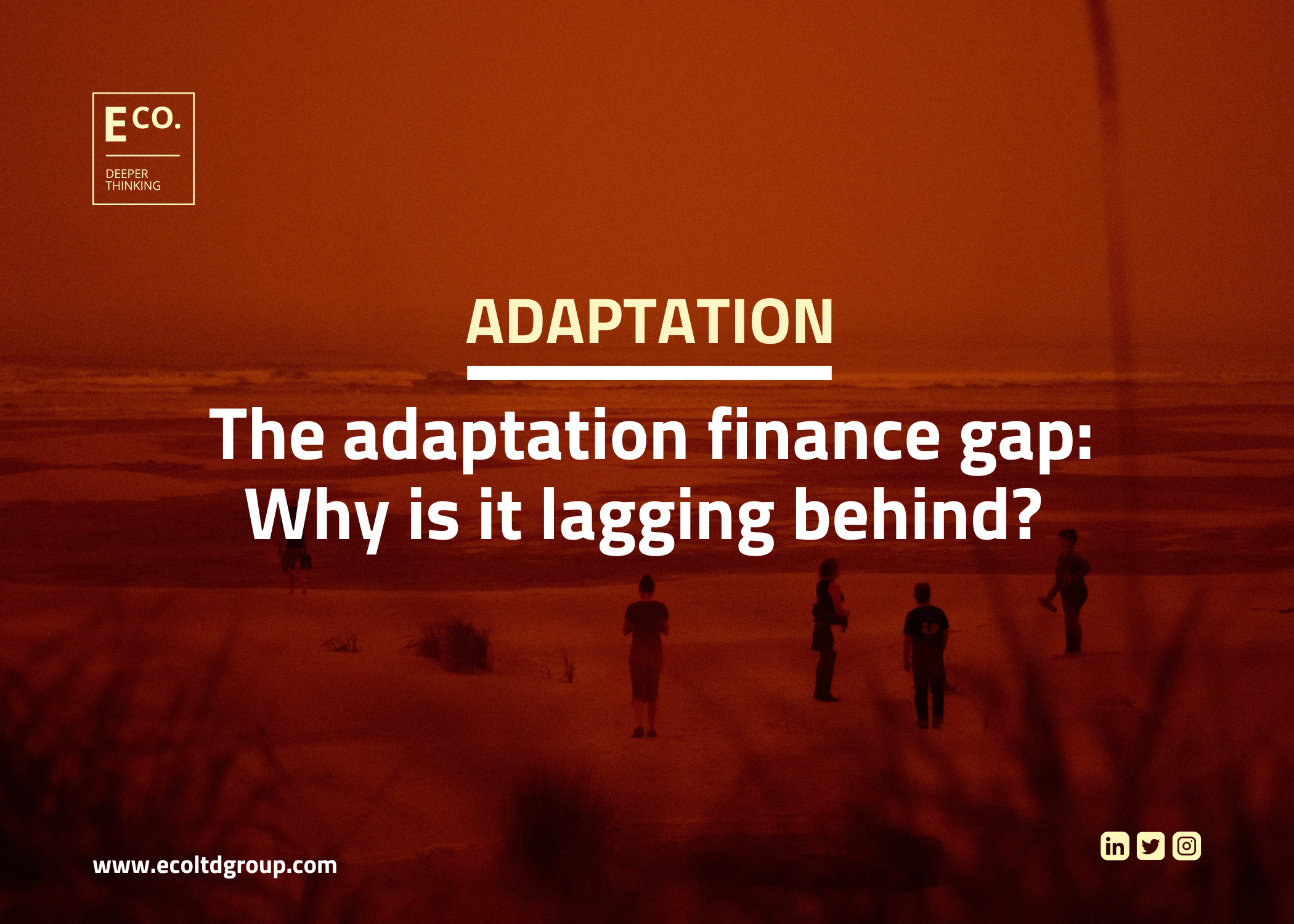
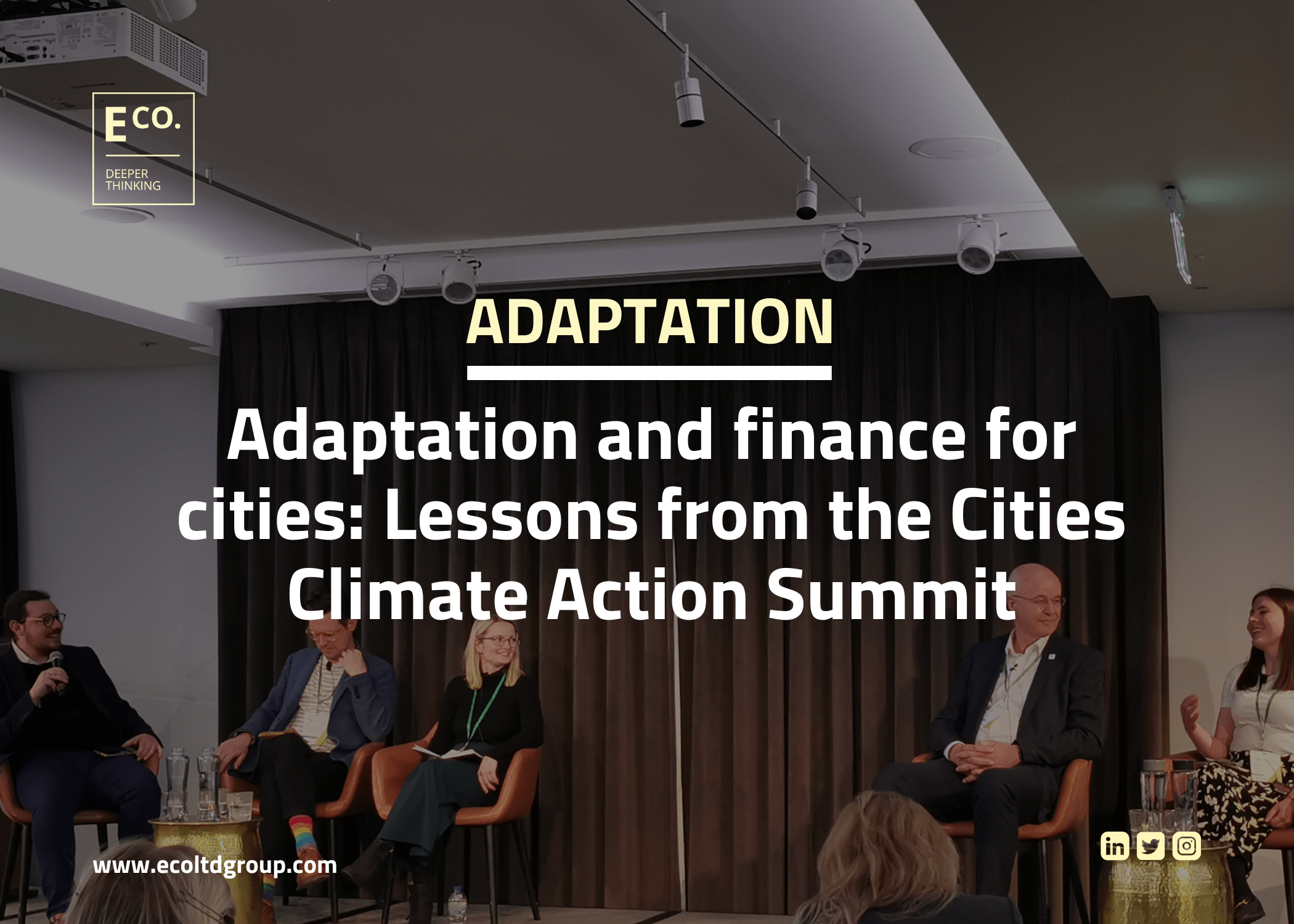
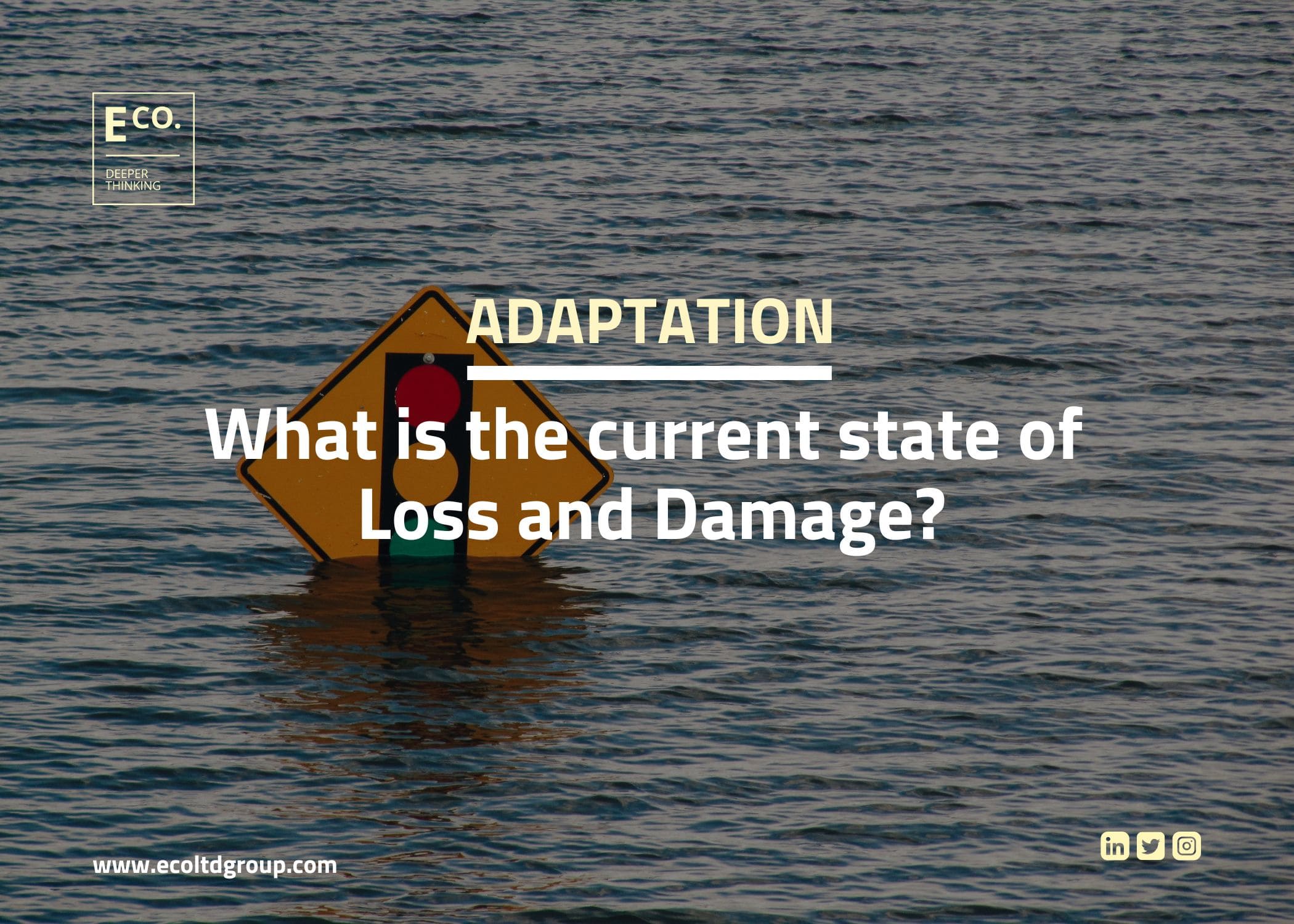
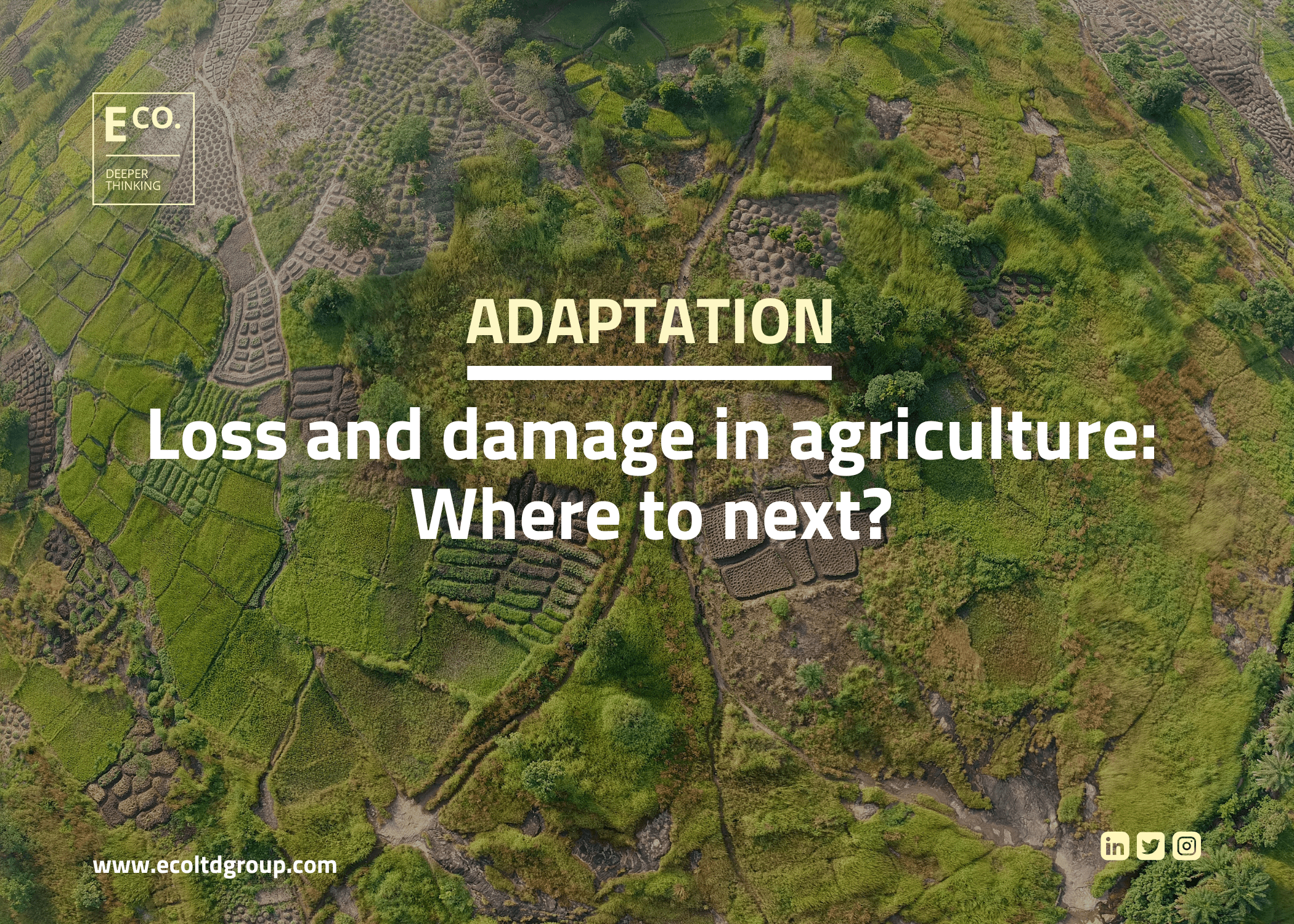
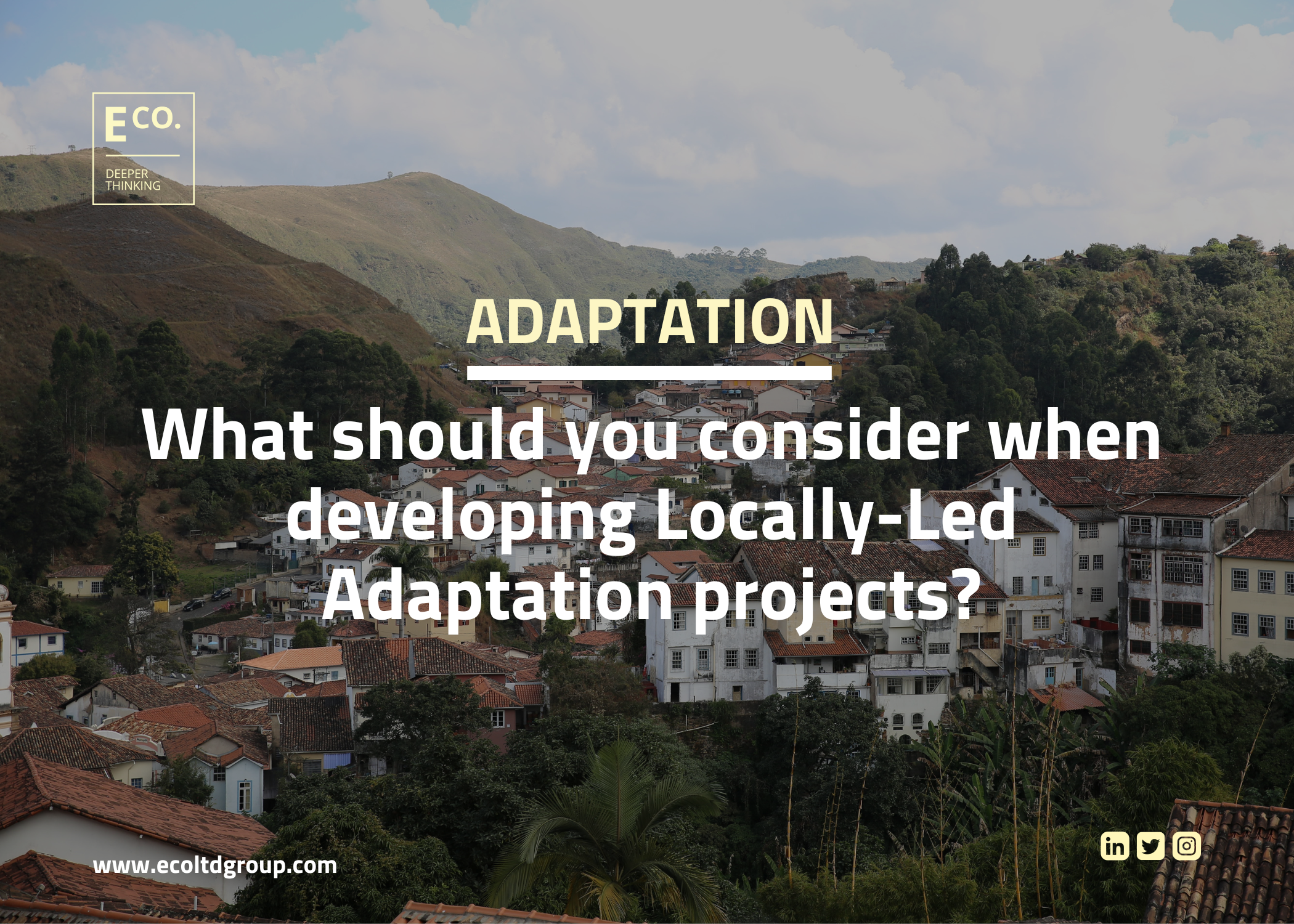
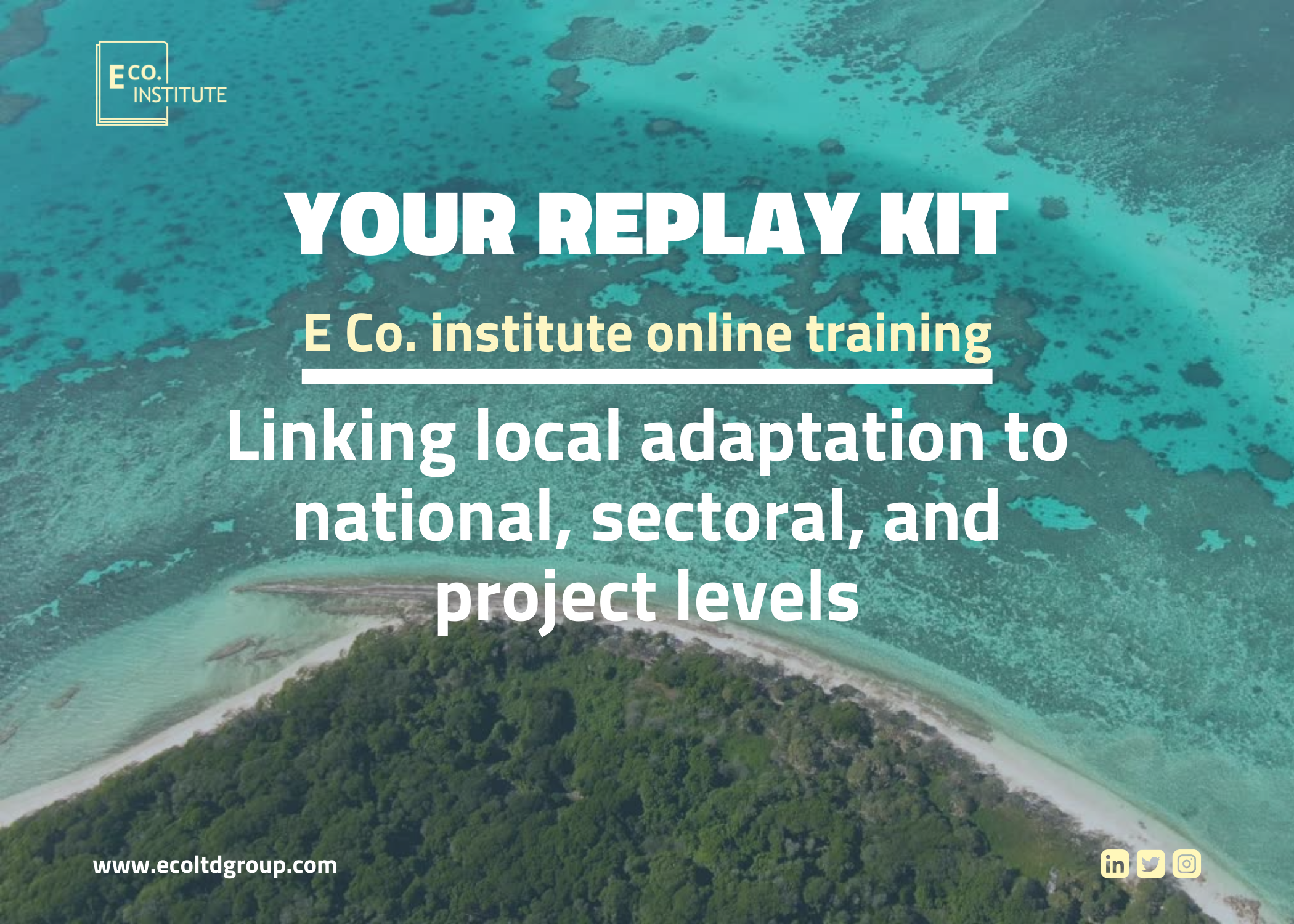
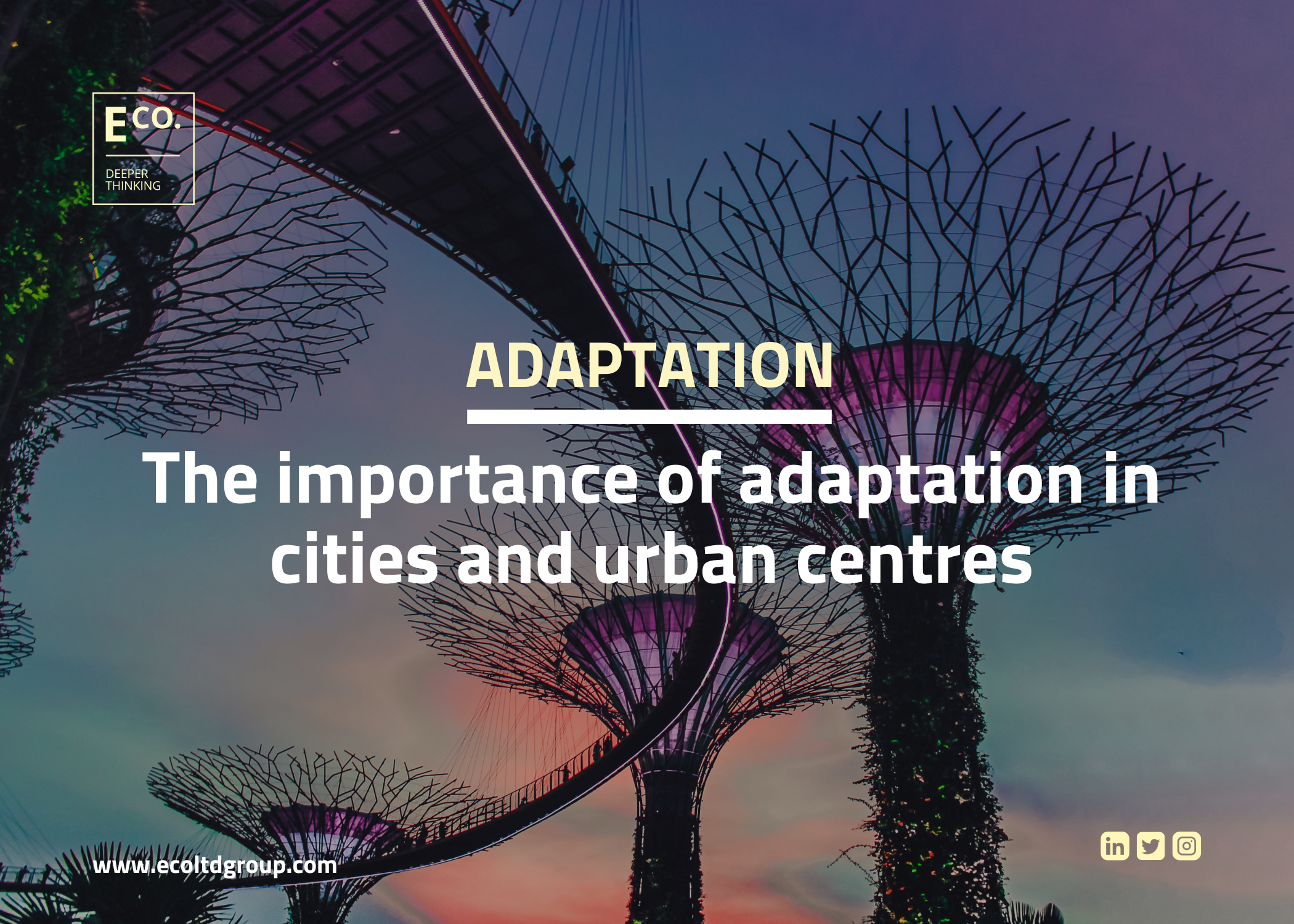
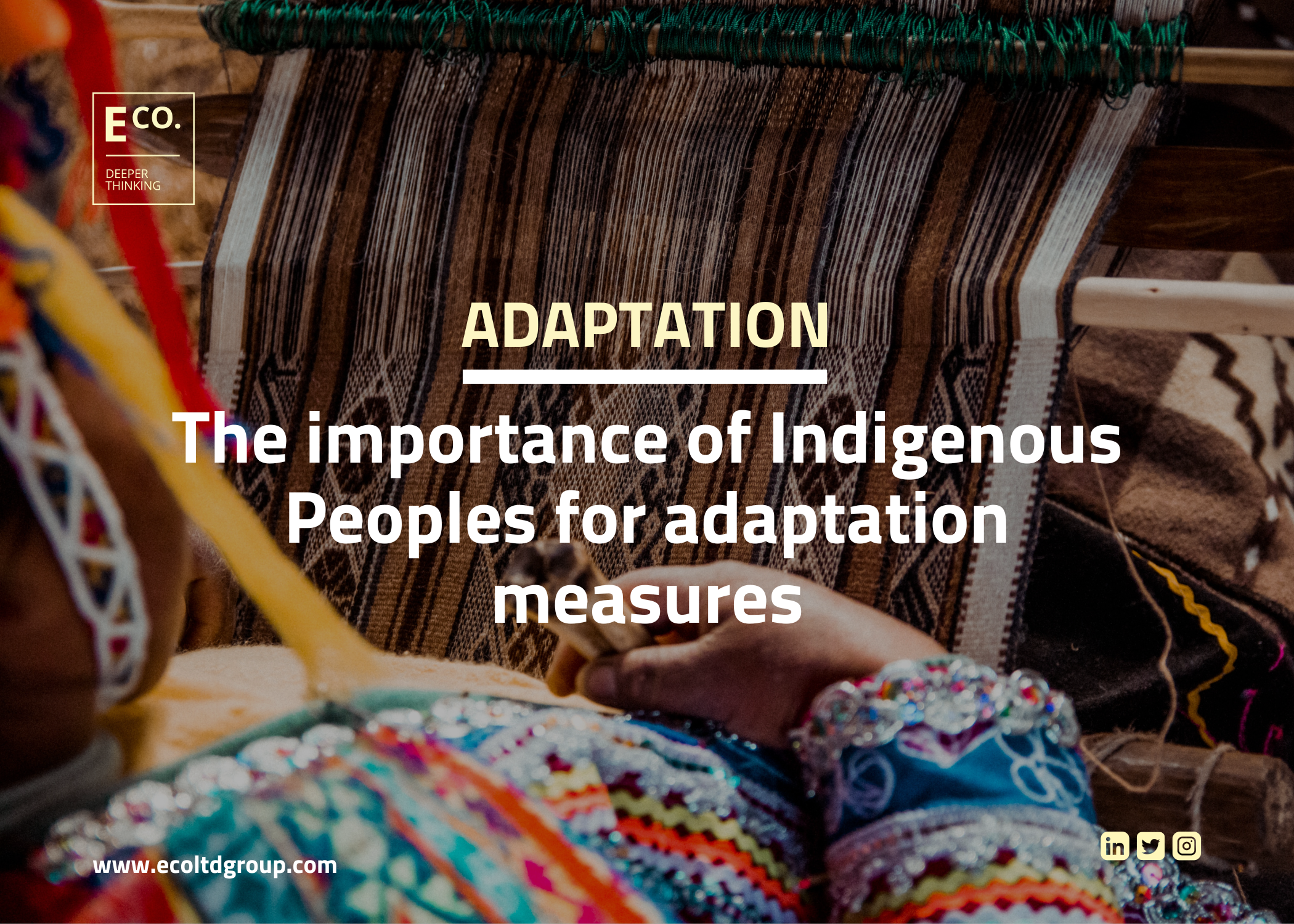
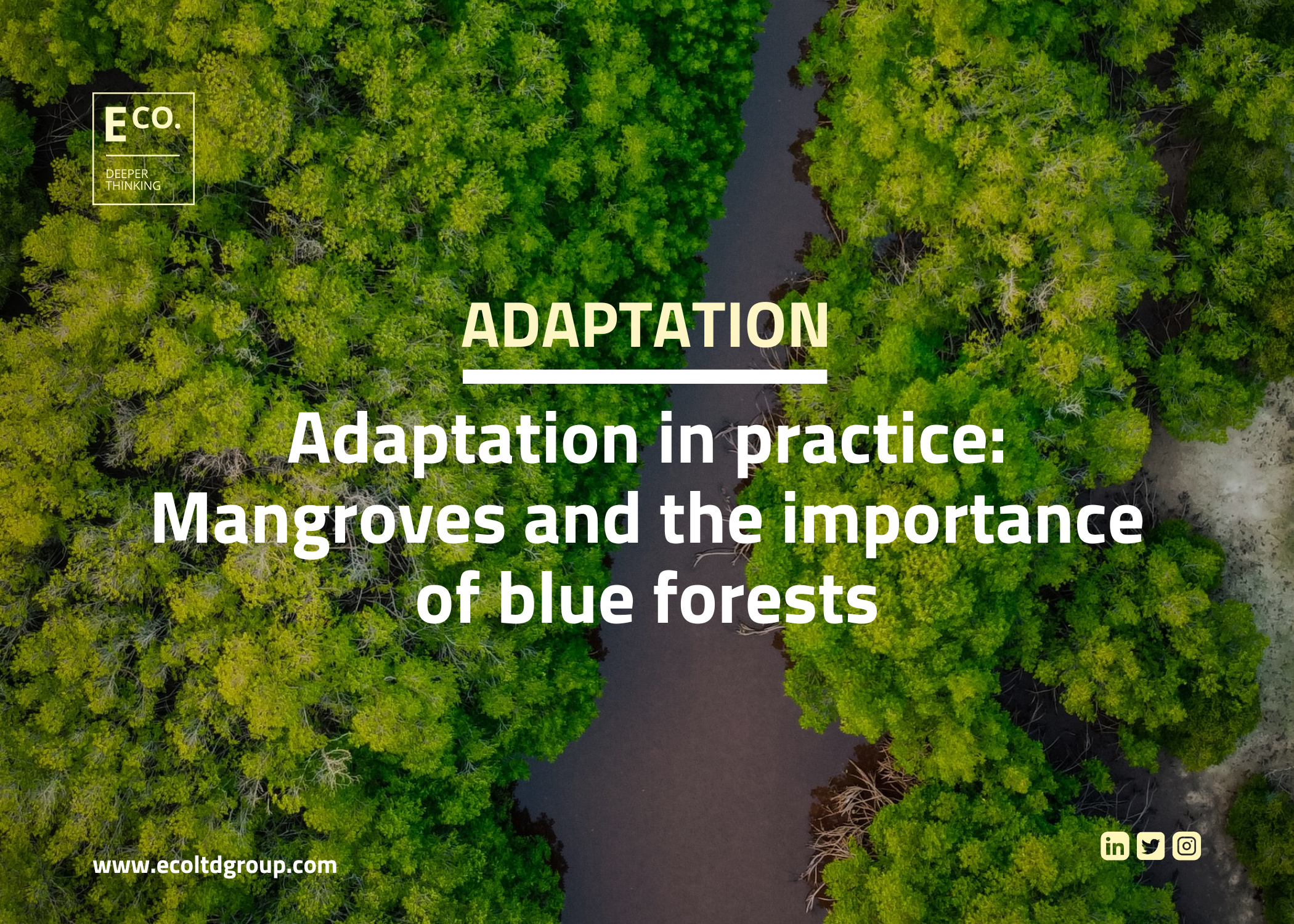
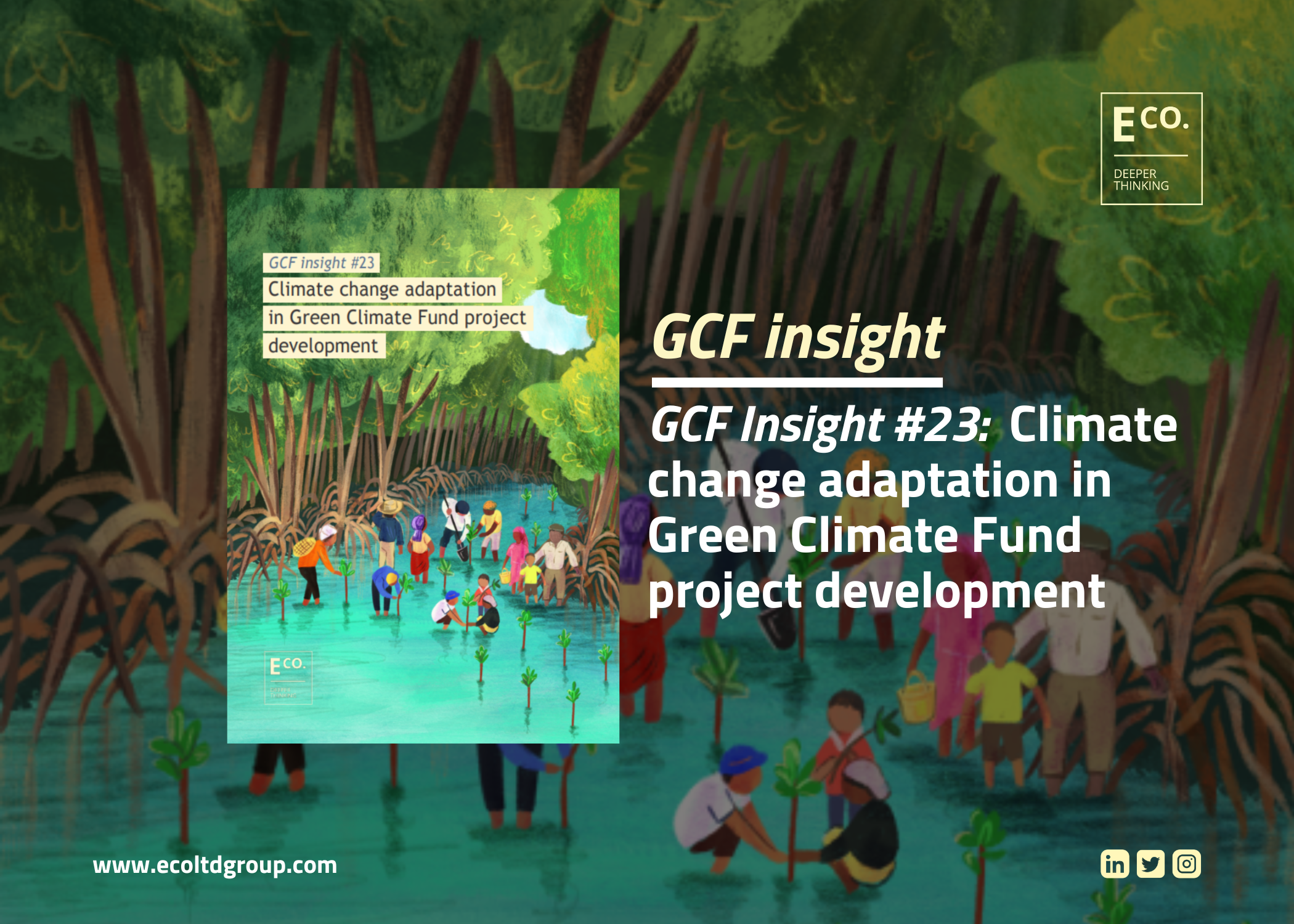
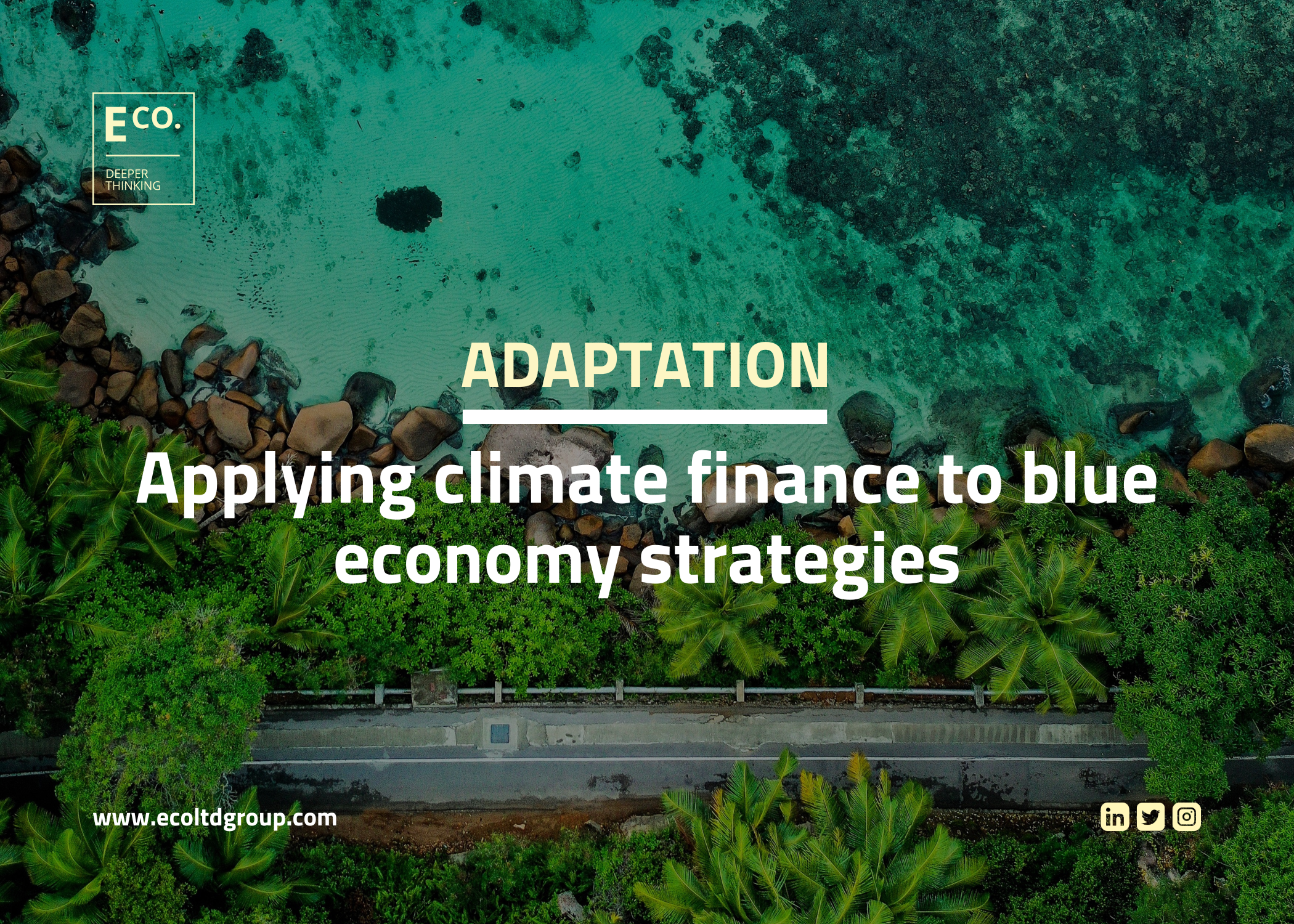
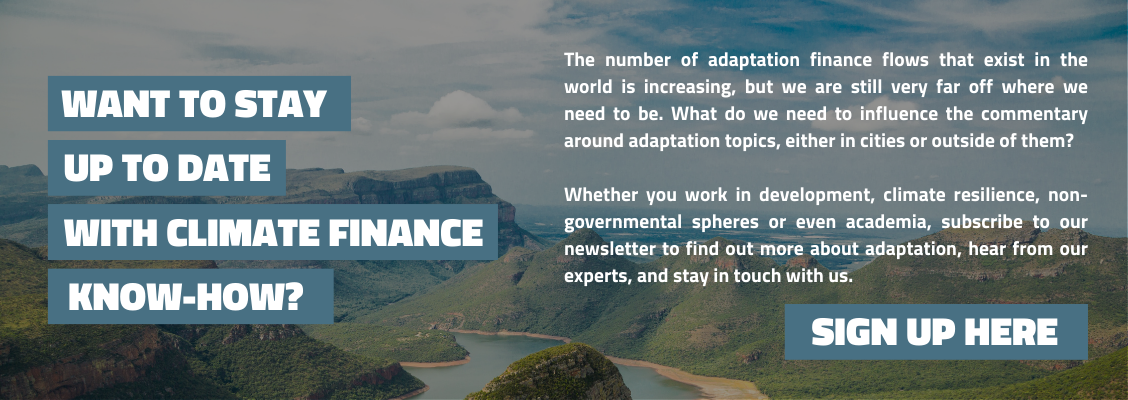
Join the conversation by posting a comment below. You can either use your social account, by clicking on the corresponding icons or simply fill in the form below. All comments are moderated.